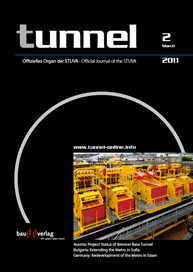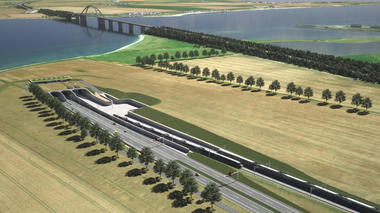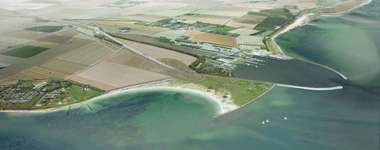Construction of a Tunnel instead
of a Bridge at Fehmarn Belt
Following one and as half years’ preliminary work with 20 possible tunnel routes and 16 bridge variants being scrutinised, the state-owned Danish planning company Fehmarn A/S has proposed a 17.6 km long immersed tunnel to cross the Fehmarn Belt between the Baltic Sea islands of Fehmarn and Lollar instead of a cable-stayed bridge. The technical risks during construction, environmental protection, effects on safety for shipping and construction costs were all lent due consideration. The solution represents the basis for the German plan approval procedure. The Fehmarn A/S is reckoning on the construction work being awarded in 2014 and with costs amounting to 39 bill. Crowns (5.5 bill. euros), which Denmark will be responsible for while Germany will cater for the rail and road link to Lübeck (1.7 bill. euros).
Crossing the Fehmarn Belt represents the final missing link in the biggest transport project in Danish history: connecting its Baltic Sea islands with the mainland. As from 1998 the bridge (13.4 km) over the Great Belt, has facilitated travelling from Seeland to Fünen and further to Jutland. Then from 2000 the Oresund crossing (8 km of bridge and 4 km of tunnel) between Copenhagen and Malmo in Sweden was set up. Both crossings levy tolls and the Fehmarn crossing will do the same.
Up till now 5 ferries ply between Puttgarten on Fehmarn and Rodby on the island of Lollar on the so-called “Vogelfluglinie”. They carry around 2 mill. vehicles per year as well as some 1,000 passengers by train per day on the route from Hamburg to Copenhagen over the Belt. Thanks to the tunnel the travelling time for the rail link will probably be cut from over 4 to 3 h. The bridge over the Great Belt has been used for goods traffic since it was opened; however the route below the Fehmarn Belt is some 150 km shorter. ⇥G.B.






